Here, we will explore the top 6 open source digital asset management software for 2025 options.
Digital asset management software is becoming a game changer for businesses looking to manage their digital content.
In today’s digital world, assets like images, videos, and documents are essential. They play a key role in branding, marketing, and communications.
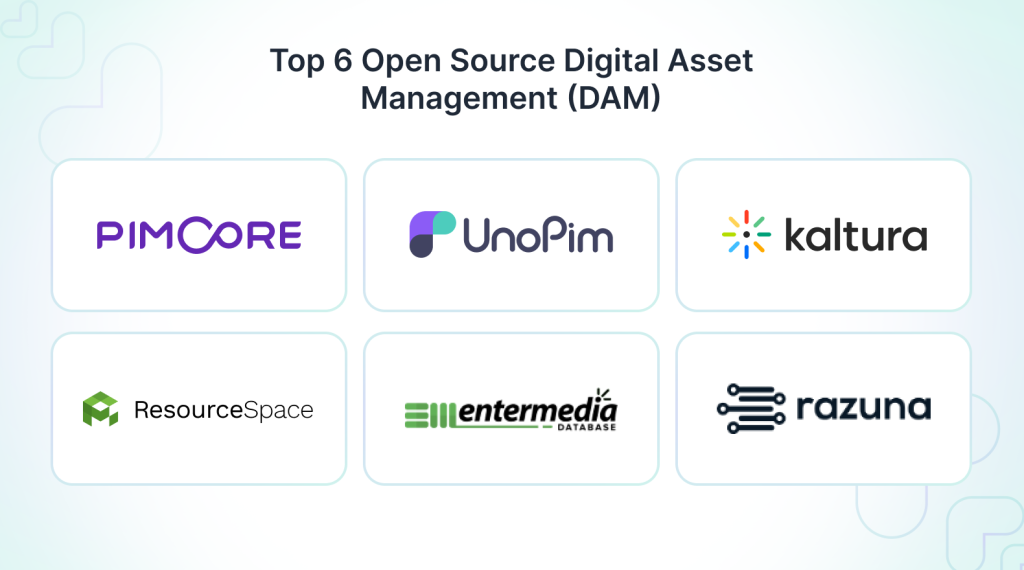
However, managing this growing content pool can be challenging without the right tools.
That’s where DAM solutions come in, helping businesses store, organize, and distribute digital content.
Open source digital asset management software is becoming more popular because it is flexible, affordable, and can be customized.
This gives businesses better control over their digital assets. Let’s explore top 6 open source DAM software and why they’re a smart choice for your business.
Why You Need an Open Source DAM System
Digital assets are super important for businesses. They help with marketing, showing off products, and connecting with customers.
But if they aren’t managed well, things can get messy. It can be hard to find what you need, or you might even lose some of them completely.
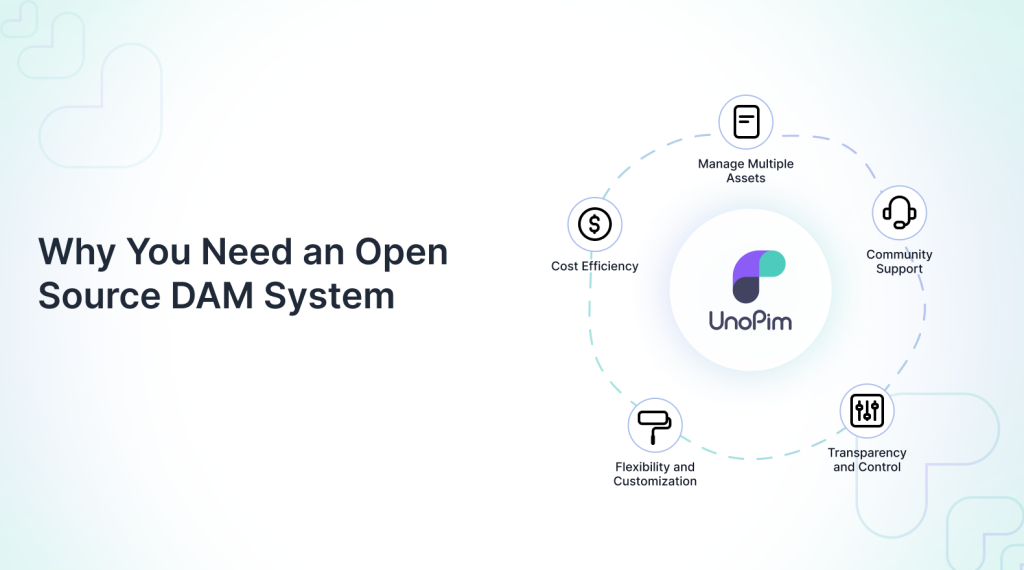
The global Digital Asset Management market is experiencing rapid growth.
According to MarketsandMarkets, the DAM market is projected to grow from $4.2 billion in 2023 to $8.5 billion by 2028, at a CAGR of 15.3%.
A big reason for this increase is that more people and companies need better ways to handle and sort all the digital stuff they have.
Here are several reasons why businesses are increasingly opting for open source DAM software:
Cost Efficiency:
Open source DAM platforms are free to use, reducing the upfront and ongoing costs associated with proprietary systems.
Flexibility and Customization:
Open source DAM software allow full customization. You can adjust the system to meet your specific business requirements without any restrictions.
Community Support:
Open source systems have groups of developers and users who constantly work together to give updates, help, and make things better.
Transparency and Control:
Using open source DAM software means your business can fully manage the code, data, and security measures.
This clear access is perfect for companies that care a lot about keeping their data safe and private.
Top 6 Open Source Digital Asset Management Software
Let’s take a look at the top 6 open source digital asset management software options.
ResourceSpace
ResourceSpace is a user friendly and strong open source digital asset management software.
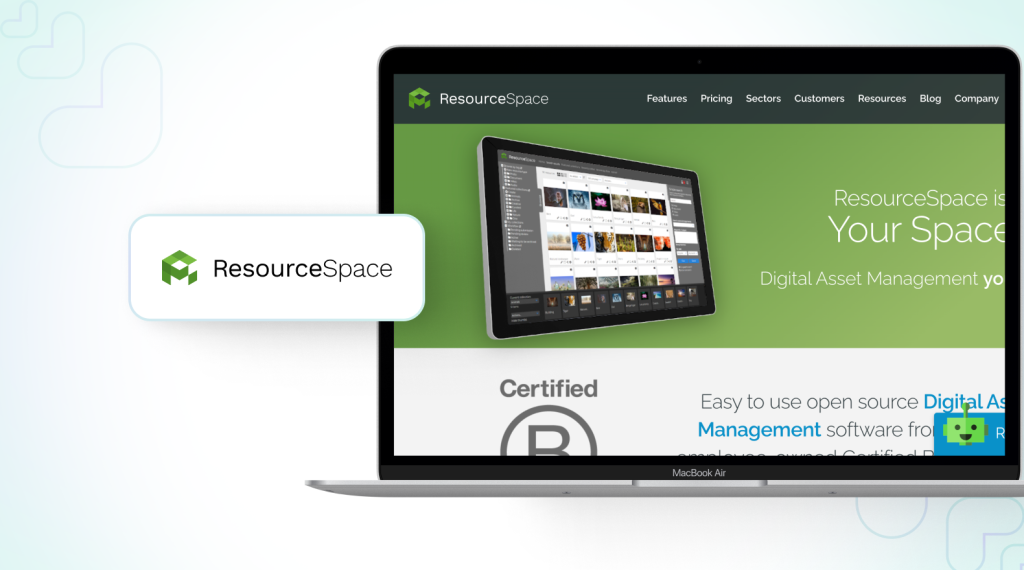
It gives companies everything they require to handle, share, and work together on their digital files. Key features include:
Bulk Upload:
Easily upload multiple assets at once with support for various file types.
Advanced Search:
Search assets by metadata, file type, keywords, and custom fields.
User Roles:
Control user access and permissions based on roles within the organization.
API and Integration:
Flexible API for integration with other tools.
Pros:
- Strong search capabilities and metadata management.
- Multilingual support for global teams.
- Strong community support.
Cons:
- User interface may seem outdated to some users.
- Can be complex for non technical users to set up.
UnoPim DAM
UnoPIM DAM is a super adaptable, open source and free DAM software made for companies of any size.
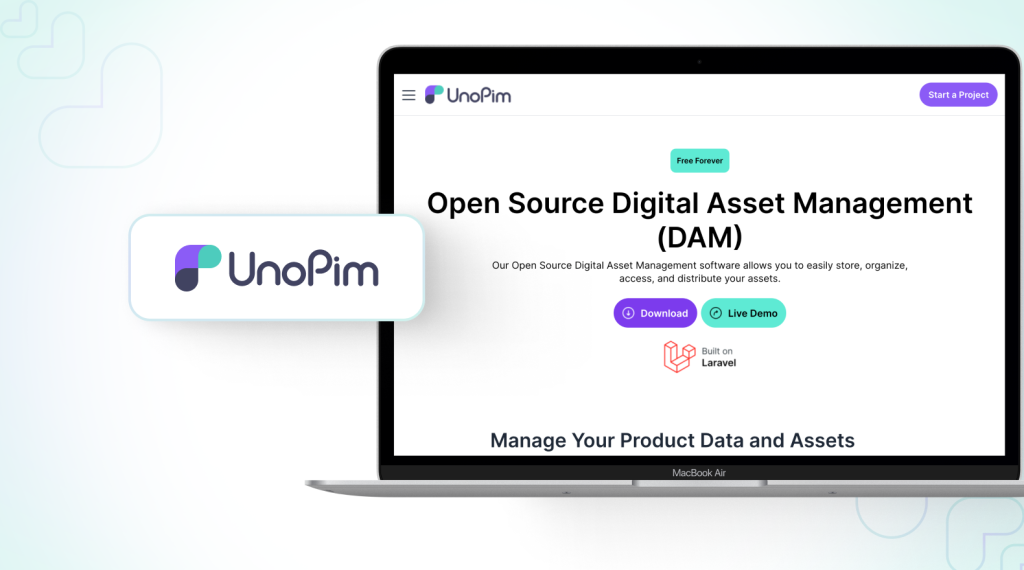
It has an easy to use interface and strong features for managing assets effectively. Key features include:
Open Source Flexibility:
You can get complete access to the system’s source code. This allows you to customize and integrate it however you want.
Custom Image Conversion:
You can change images into different formats such as JPG, PNG, WebP, and JPEG, and you can also resize them to fit your needs.
Bulk Actions and One Click Download:
Perform bulk deletions and download entire directory structures in one click.
Asset Linking and Collaboration:
Link related assets and add comments to improve collaboration.
Multi File Type Support:
UnoPim DAM can handle many different types of files like images, PDFs, audio, video, and others.
Pros:
- Customizable and highly flexible.
- Simple user interface and easy to navigate design.
- Supports multiple file types (images, audio, video, etc.).
Cons:
- Limited community and support compared to larger platforms.
- Requires technical expertise for full customization.
Pimcore
Pimcore is a free platform that offers a wide range of features, including digital asset management (DAM) tools.
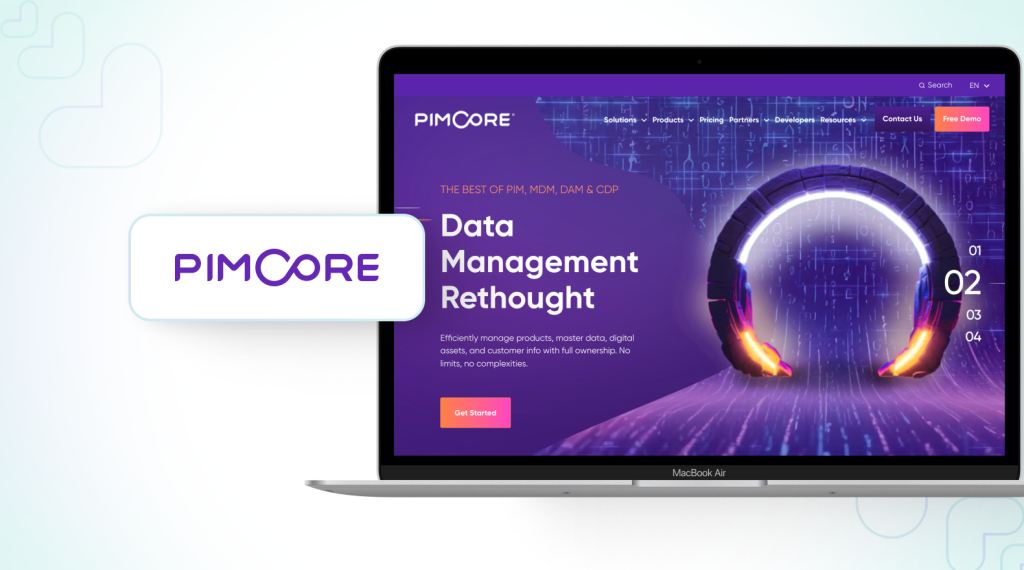
It’s perfect for companies that want a versatile platform to meet various needs. Key features include:
Centralized Asset Repository:
Store all your digital content in one place, making it easy to manage and access files.
Advanced Metadata:
Tag and categorize assets with detailed metadata for better organization and easier search.
Customizable UI:
Modify the user interface to meet your specific needs and improve user experience.
Scalable:
Perfect for companies of any size, providing the ability to grow and adapt as your collection of assets increases.
Pros:
- Multifunctional, offering DAM, product information management, and content management system features.
- Highly customizable and flexible.
- Scalable for enterprises.
Cons:
- Steeper learning curve due to its broad range of features.
- Overkill for small businesses looking for basic DAM functionality.
EnterMedia
EnterMedia is a free and open source digital asset management software.
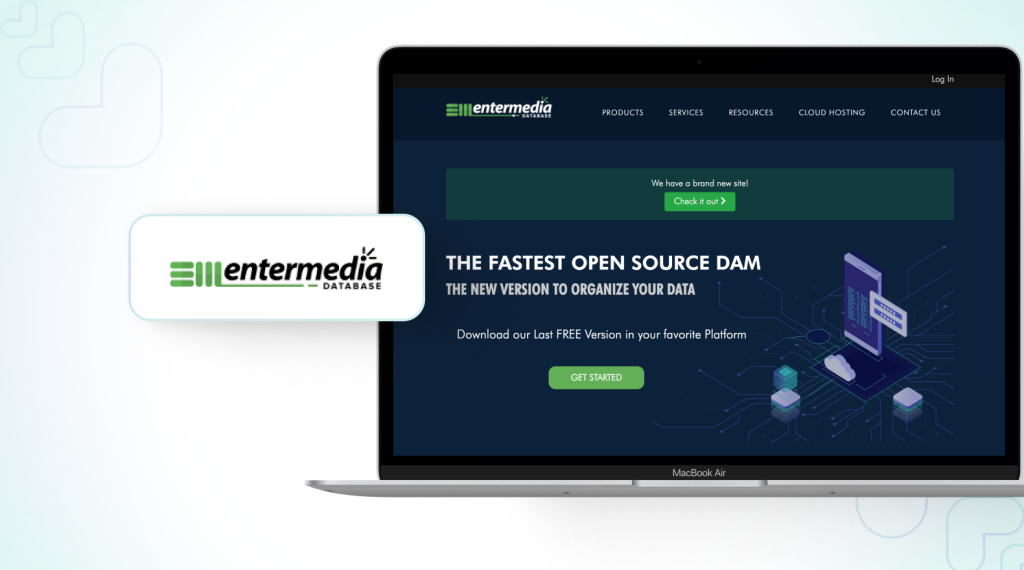
It specializes in handling media heavy files such as pictures, videos, and documents. Key features include:
Cloud Storage:
You can easily get to your files saved in the cloud. This means you can reach them from anywhere as long as you have internet access.
Advanced Search and Filtering:
You can easily locate assets by using special search filters, metadata, and keywords. This helps make finding assets faster and improves how you work.
Multimedia Support:
It works with different kinds of media like images, audio, and videos, which makes it great for all sorts of content.
Security Features:
Make sure to keep your important information safe by using encryption and giving access based on roles.
This way, only the people who are allowed can see and use the sensitive stuff.
Pros:
- Strong multimedia support, especially for videos and audio.
- Robust security features for managing sensitive assets.
- Easy to use with a clean interface.
Cons:
- Limited customization options compared to other open source DAM systems.
- Some features are only available through premium versions.
Kaltura
Kaltura is an open source video management platform that doubles as a DAM for video content.
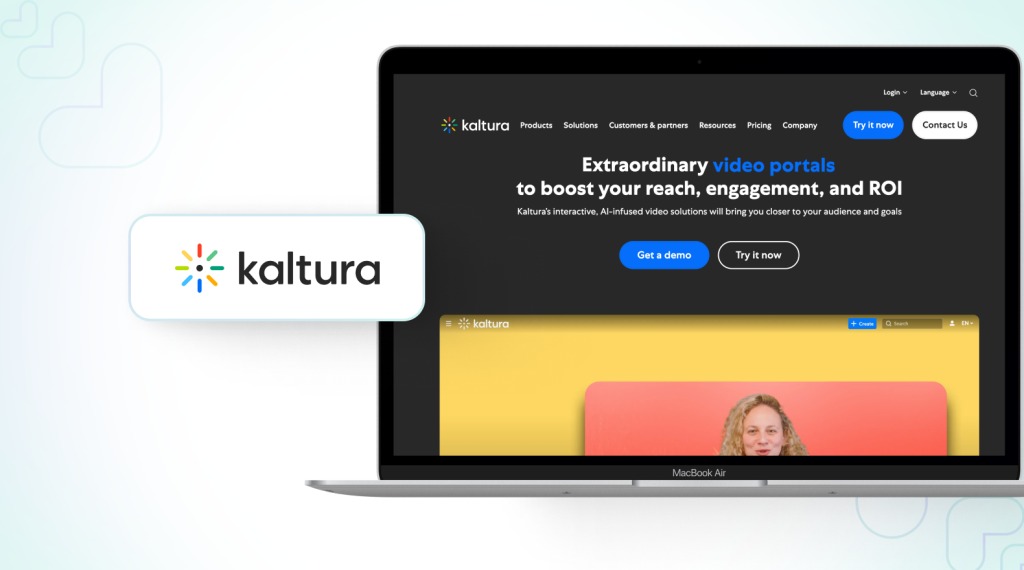
It is particularly beneficial for businesses with a significant amount of video content. Key features include:
Video Asset Management:
Store, arrange, and share video content in a way that makes it easy to find. This helps everything run smoothly.
Live Streaming:
You can stream live videos, which means you can share events or webinars as they happen right from the platform.
Integration with Other Tools:
It works with current platforms such as content management systems, marketing tools, and social media.
This makes the workflow and sharing of content much better.
Customizable:
You can change the platform to meet your video management needs. This includes things like adding metadata tags and adjusting the user interface.
Pros:
- Video asset management that is super effective, featuring cool streaming options.
- Customizable for businesses focused on video content.
- Multi device access for global teams.
Cons:
- Primarily suited for businesses focused on video; may not be ideal for those needing a broader DAM solution.
- Requires significant technical expertise for advanced features.
Razuna
Razuna is an easy to use yet powerful open source digital asset management software.
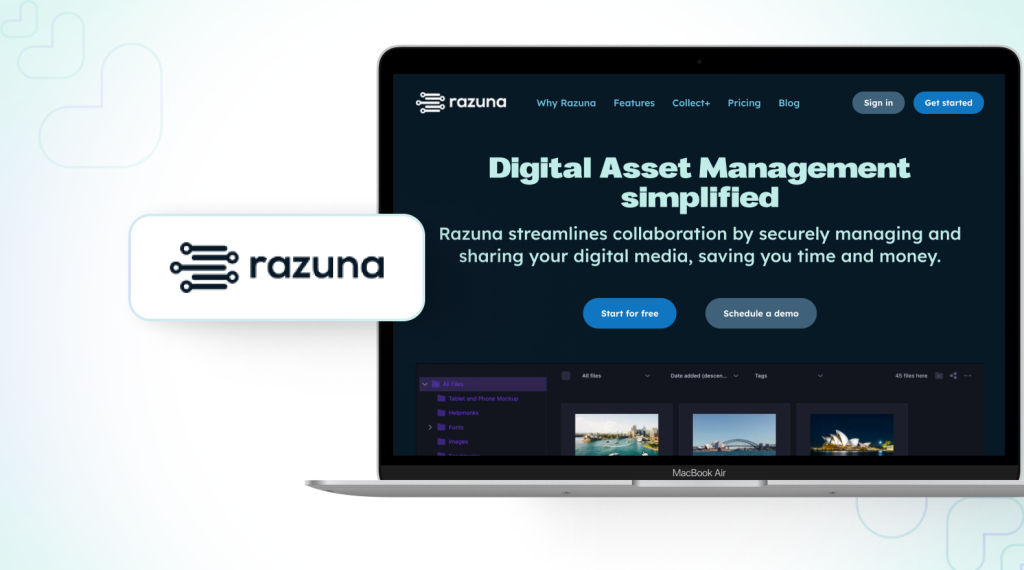
It helps companies organize their digital assets effectively. Key features include:
Flexible Metadata:
You can sort and find your items better by using special tags to describe them.
Cloud and On Premises:
It can be set up in the cloud or installed on local servers.
Collaboration Tools:
Work together and share resources with people inside and outside the organization.
Versioning:
Keep track of changes to assets and go back to earlier versions if needed.
Pros:
- Simple to use and quick to set up.
- Offers various deployment choices (cloud or on site).
- Perfect for small to medium sized companies.
Cons:
- Lacks some of the advanced features found in larger DAM platforms.
- Limited community support and fewer integrations.
Conclusion
As digital content becomes more popular, it’s really important for businesses to pick the best open source digital asset management software.
This helps them stay competitive, organized, and efficient.
Free DAM software like UnoPim DAM and Pimcore offers flexibility, customization, and cost savings.
These are benefits you just can’t get with proprietary systems.
These top 6 open source DAM software make it easier to work together, improve teamwork, and keep your digital files safe and easy to find.
No matter if you run a small business or a big company, these tools help you handle your content well.
This allows you to concentrate on expanding your business and connecting with your customers.
If you are using Akeneo PIM and need a DAM solution, check out our Akeneo DAM Extension.
You can also check out Akeneo DAM Development Services to easily connect your PIM and DAM systems for a smooth and combined solution.
Hope this helps! If you encounter any issues, feel free to submit a ticket at our Support Portal.


Be the first to comment.